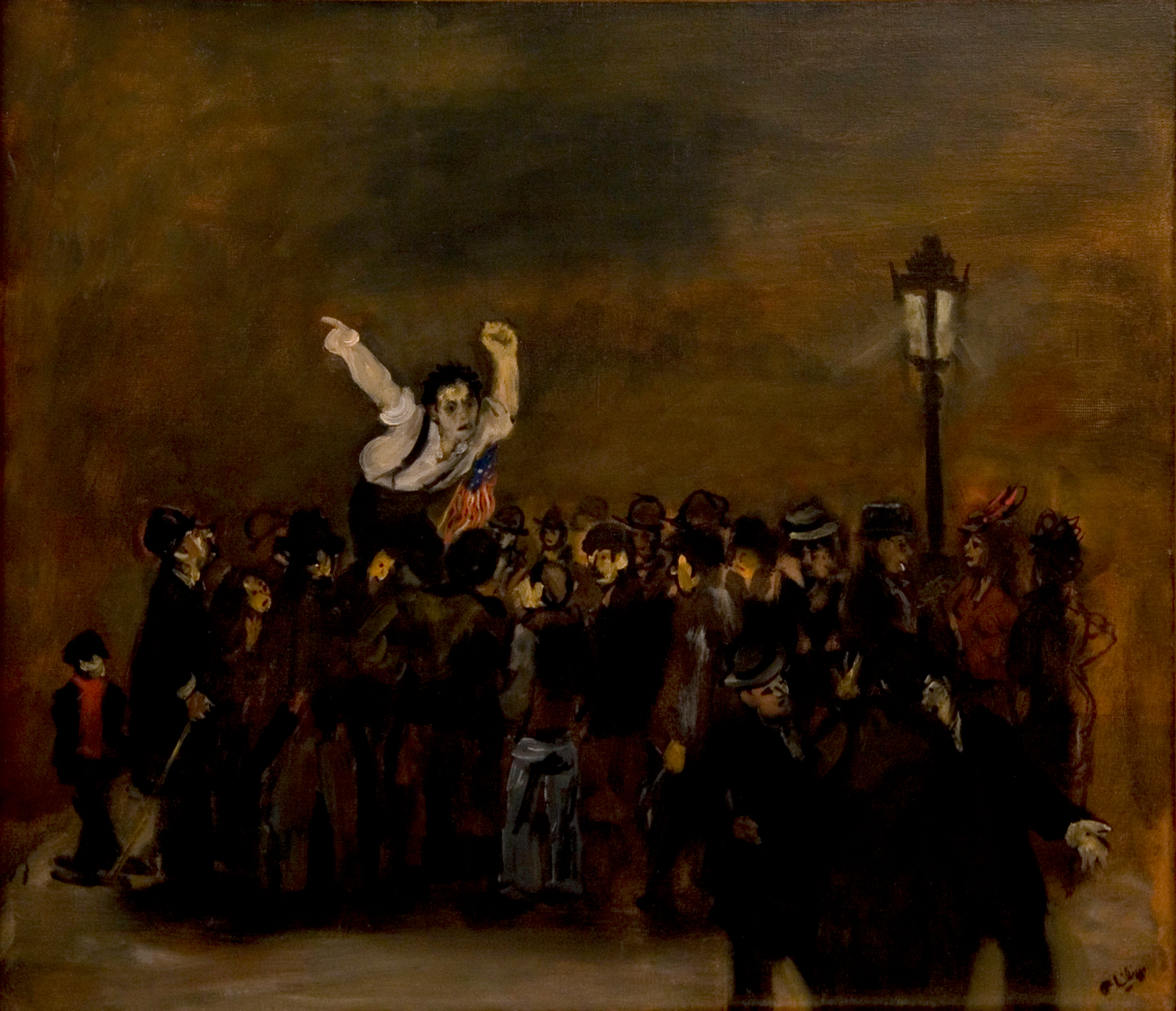Robert Philipp
Sometimes referred to as “America’s last Impressionist,” Robert Philipp (1895-1981) was known equally for Degas-esque theatricality and Renoir-esque romanticism in his portraits, nudes, street and night scenes.
Born in New York City, Philipp began studying at the Art Students League — where his mentors included George Bridgeman and Frank DuMond — at age 15. From 1914-1917 he studied at the National Academy of Design under Douglas Volk and George Maynard. Philipp briefly had a stint as a tenor in his uncle’s opera company but soon abandoned the pursuit in favor of visual art.
Philipp disappeared to Paris in the 1920s for around a decade; little is known of his time there, though encounters with Impressionist and Post-Impressionist movements had a profound impact on his style — his rhythmic lines and elegant compositions accented by shocks of bright red and garish, unnatural skin tones.
He returned to New York in the 1930s, where critics traced a gradual loosening and darkening of his compositions. In 1934 Philipp married artist Rochelle Post, who became his favorite model. In 1935 he was elected to the National Academy of Design; he taught for both them and the Art Students League for several decades. In 1936 Philipp was the only American artist to receive a Carnegie Award.
The 1940s brought a commissions to paint portraits of MGM movie stars by Louis B. Mayer as well as scenes from the production of the John Ford film “The Long Voyage Home” alongside such prominent artists as Grant Wood and Thomas Hart Benton. Today Phillips’s works are held in collections like the Brooklyn Museum and the Whitney.
